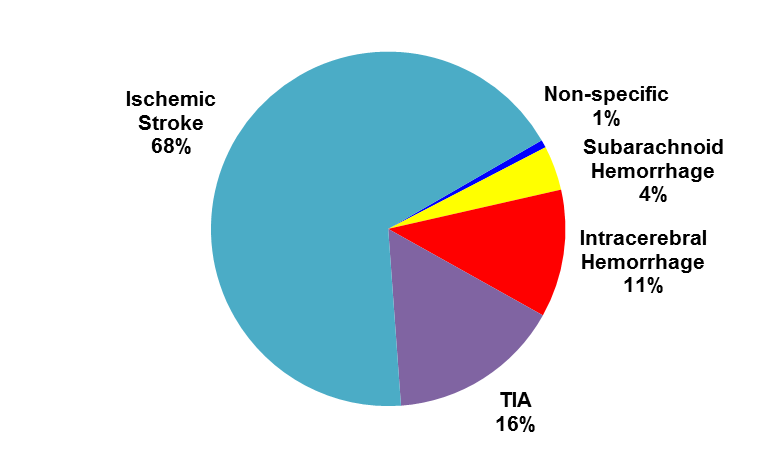
Stroke Epidemiology

Stroke is a leading cause of death in the United States and is a major cause of serious disability for adults. It is also preventable and treatable.
Learn the signs of stroke, and call 9-1-1 right away if you think someone might be having a stroke. Getting fast treatment is important for preventing death and disability from stroke.
Stroke in Georgia
Stroke is the fifth leading cause of death in Georgia. It is also a leading but preventable cause of disability. It can happen at any age.
Georgia is in the “stroke belt,” an area in the southeastern U.S. with stroke death rates that are approximately 30 percent higher than the rest of the U.S. The coastal plains of Georgia are in the “buckle” of the Stroke Belt, an area with stroke death rates about 40 percent higher than the rest of the nation. For more information, download the
2023
Coverdell
Data Summary
.
What is a Stroke?
A stroke is a medical emergency. It is often referred to as a "brain attack" because the blood flow to an area of the brain is cut off, depriving brain tissue of oxygen and nutrient. When this happens, brain cells start to die and abilities controlled by that area of the brain, such as memory and muscle control, are lost.
Stroke: The Reality Part 1: What does it really mean?
Types of Stroke
There are three main types of stroke: ischemic, hemorrhagic, and transient ischemic attack.
- Ischemic stroke occurs when the artery to the brain becomes blocked.
- A third of ischemic strokes are classified as non-specific stroke It is a stroke of unknown cause.
- Hemorrhagic stroke occurs when an artery in the brain ru.ptures or breaks open causing bleeding into or around the brain.
- Intracerebral hemorrhage is the most common type of hemorrhagic stroke. It occurs when an artery in the brain bursts, flooding the surrounding tissue with blood.
- Subarachnoid hemorrhage is a less common type of hemorrhagic stroke. It refers to bleeding in the area between the brain and the thin tissues that cover it.
- Transient ischemic attack (TIA or “mini-stroke”) occurs when blood flow to the brain is blocked for only a short time. However, just like the other types of stroke, TIA is a medical emergency. It is a serious warning sign that a stroke may happen in the future. It should not be ignored.
Types of Stroke, GCASR, 2014 (n=15,938)

Quick Treatment is Critical for Stroke
A stroke is a serious medical condition that requires emergency care. Act F.A.S.T. Call 9-1-1 right away if you or someone you are with shows any signs of a stroke.
Time lost is brain lost. Every minute counts.
Prevention and Treatment
If you have heart disease, high cholesterol, high blood pressure, or diabetes you can take steps to lower your risk for stroke.
- Talk to your primary care physician
- Take your medicine
- Control blood pressure
- Check cholesterol
- Manage heart disease
- Manage diabetes
For more details on risks, prevention, and treatment visit the DPH Stroke page.
Learn more about stroke from the American Stroke Association, and the Centers for Disease Control and Prevention.
Improving Stroke Care and Prevention in Georgia
Through Georgia Coverdell Acute Stroke Registry, Georgia Department of Public Health works with multiple health systems, emergency medical systems (EMS), and organizations across the state to increase stroke awareness and enhance stroke care in Georgia. Funding for the Registry is made possible through the Paul Coverdell National Acute Stroke Prevention Program of the Centers for Disease Control and Prevention. For more information, go to the Georgia Coverdell Acute Stroke Registry page.
______________________________________________________________________________________________
Page Last Updated 4/18/2024